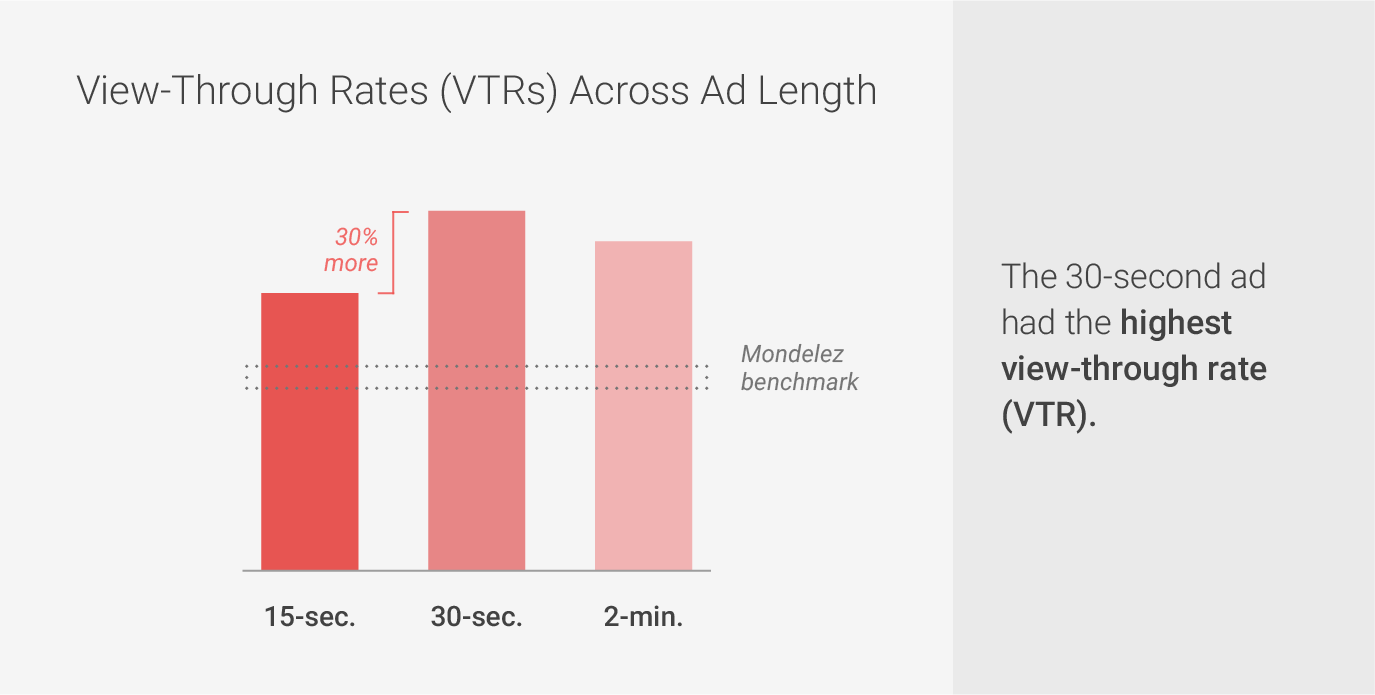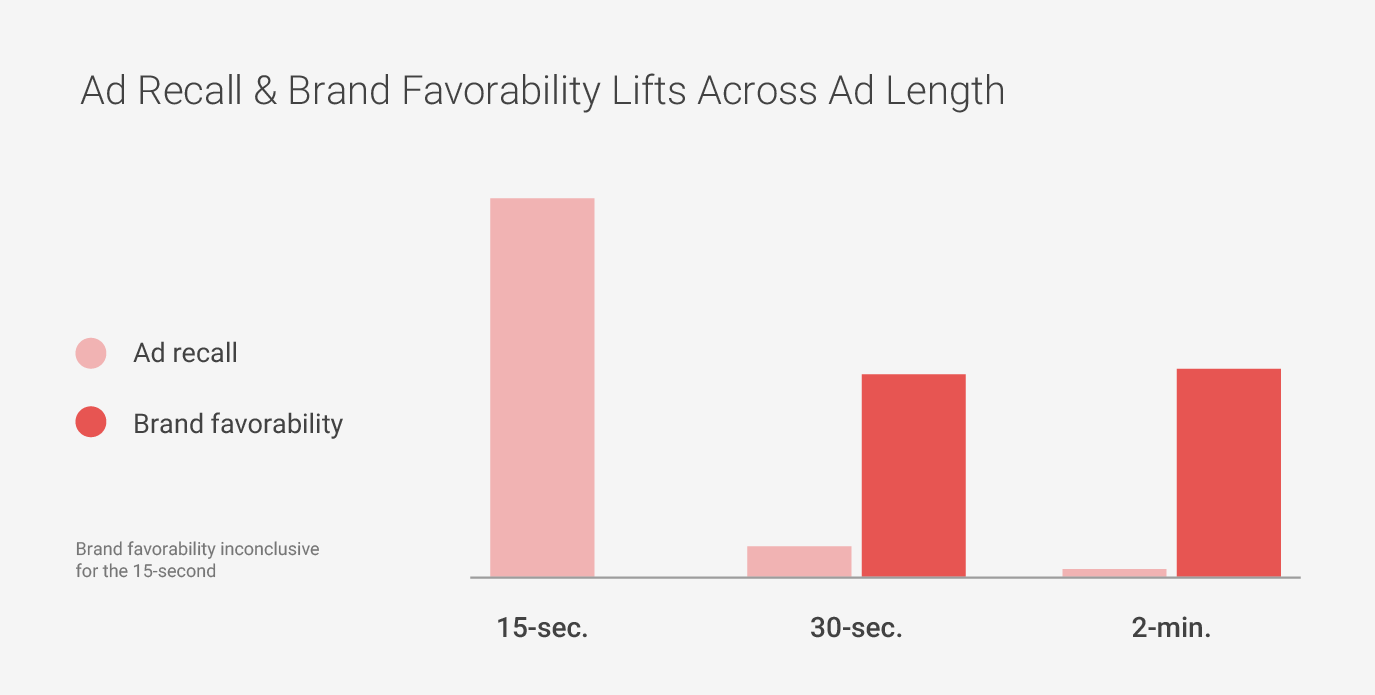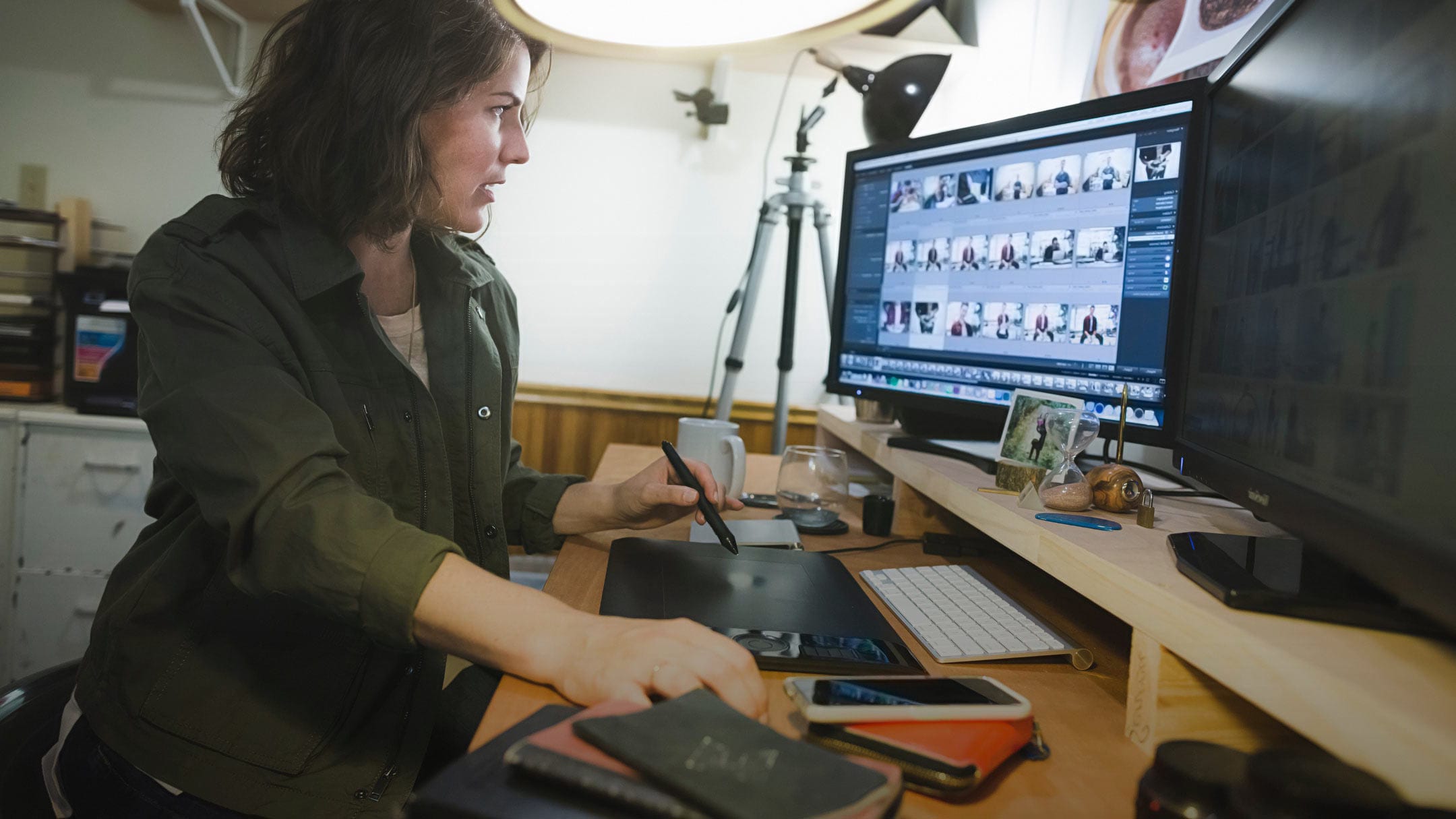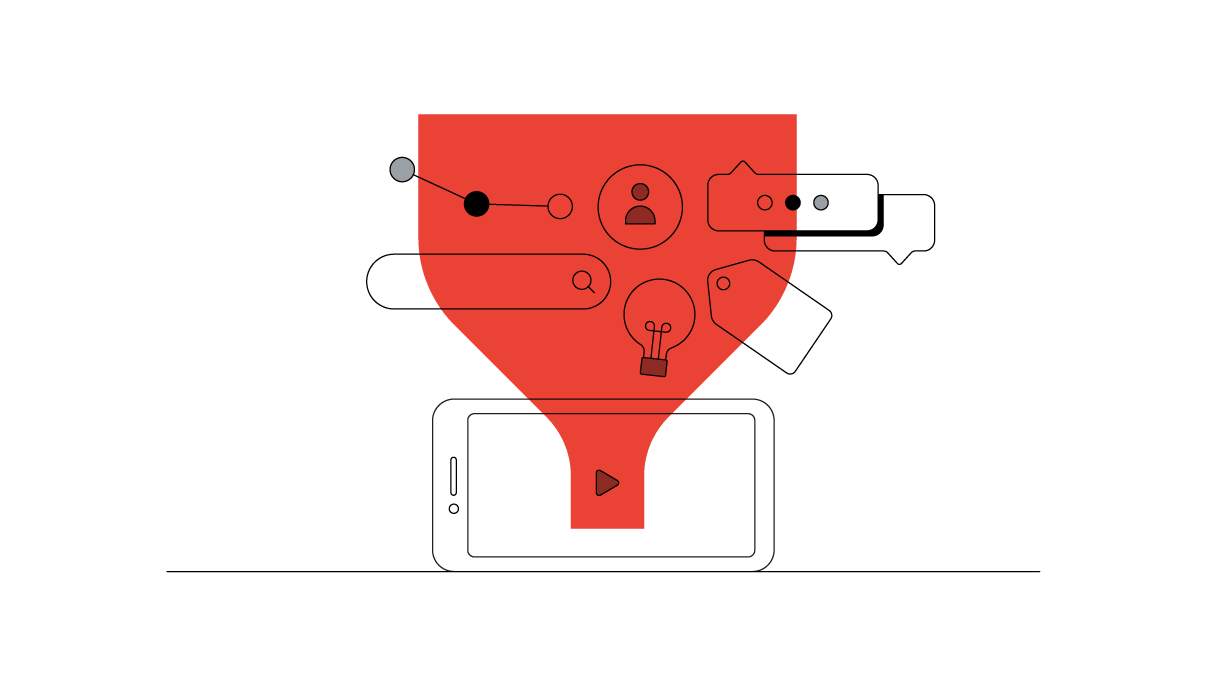How long does it take to change someone's mind about your brand in a video ad? Should you rush to tell your story to avoid getting tuned out, or should you embrace a longer format to build a more captivating story? Google partnered with Mondelez International to find out.
The standard TV ad in the "Mad Men" era was 60 seconds long. But to bring more advertisers to the platform, networks first offered 30-second ads, and then 15-second ones to serve advertisers with smaller budgets. As a result, ad length became a function of price, not attention or effectiveness.
In fact, television ad research has established that 15-second TV ads are roughly 75% as effective as 30-second spots.1 And they're half the cost. So it's no surprise that 15-second ads are so common on TV, and that 60-second spots are few and far between.
But what about length and effectiveness on YouTube? Previous research has shown that there is a consistent relationship between how long an ad is viewable and increases in brand awareness and consideration. And we've found that viewers are certainly willing to watch longer ads: The average length of ads on the YouTube Ads Leaderboard in 2014 averaged three minutes—an increase of 47% vs. 2013.2 And none of the top ads in 2014 and 2015 were under a minute.3
Does that mean that on YouTube, longer is stronger?
In this Unskippable Labs experiment, we bring a little data to the art of storytelling and explore how the length of an ad can affect brand lift metrics. We partnered with Mondelez International and Droga5 to test real ads for Honey Maid
A study in video advertising: "Go short or go long"
We tested three cuts of varying length using TrueView, YouTube's skippable ad format. Then we measured how people responded to the ads in two critical ways: what people chose to watch (whether they watched 15 seconds, 30 seconds, or more; how long they watched the longer cuts) and how that impacted the brand (ad recall and brand favourability) via a Brand Lift study.
All three ads celebrate National Hispanic Heritage Month in the US and feature members of the Gomez family, focusing on their experience as immigrants in America and their love of family. Each ad has a different balance of story, product, and brand.
Here are the three ads we tested:
The 15-Second Cut
The shortest version of the ad, with a voice-over from the father, includes scenes of the family together and ends with the brand's logo and tagline. The product appears at the six-second mark, and either the product or logo is present for a total of five seconds, or 33% of the total runtime.
The Theory:
The short length of this YouTube ad will make it less skippable, without sacrificing the narrative or brand lift effectiveness. The balance of story and brand in a concise format will hold the viewer's attention and create a connection to Honey Maid.
The 30-Second Cut
The longer cut gives more detail and dimension to the story, with scenes of the father heading to work and the family playing together. While the longer format adds more Honey Maid product shots, the relative amount of explicit branding is roughly the same as the 15-second version. The product first appears at the 11-second mark, and either the product or logo is present for 10 seconds, or 30% of the total runtime.
The Theory:
This video will draw viewers in with a more in-depth story, and is still relatively short. It is the best of both worlds—short enough to keep viewers entertained and long enough to create a meaningful impression.
The Long Cut (2:17 runtime)
The longest version adds further depth to the family's story. In addition to the father, the viewer hears from the mother, daughter, and grandmother (who speaks in Spanish). Like the other ads, the themes of family and celebration are highlighted. The product does not appear until 1:17, and either the product or logo is present for only 12 seconds, or just under 9% of the overall runtime.
The Theory:
The long-form version builds tension by illuminating some of the Gomez family's struggles, which adds a richness to the final scenes of celebration. The layered story that reveals more facets to the family will pull viewers in and keep them engaged.
Findings from "Go short or go long"
Here's what we found when we looked at which of the three ads people chose to watch (and for how long), and how that impacted the brand:
1. Longer may be stronger.
The longer cuts were both watched more than the 15-second ad, with the 30-second ad the least skipped, and the 15-second ad the most skipped.
While all three versions performed well above Mondelez International benchmarks, the 30-second ad had the highest view-through rate (VTR). In fact, its VTR was 30% higher than that of the 15-second spot.

The longer-form ads were also both more effective in lifting brand favourability than the 15-second ad. The extra depth and dimension of more complex stories created a more meaningful connection to the brand. For brands moving beyond simple awareness, a longer story may be necessary to persuade people to change how they think.
2. Connect length to goals, not just economics.
The 15-second ad was the only one to drive significant ad recall across all three cuts. For brands with a focus on awareness, the short format can be both effective and efficient. Shorter formats can raise awareness, keep the brand top of mind, and create signals that drive important behaviours such as search. But it's worth pondering the gap in performance between ad recall and favourability. Is a knockout performance in ad recall important for brands if it doesn't also impact brand favourability? Make sure what you're measuring is connected to your business goal, and don't assume that good performance in one area—like recall—is helping you in others. Ground decisions about length in your strategy; people will watch (and be persuaded by) longer stories.

3. Don't leave your brand for last.
If you are telling longer stories, don't leave your brand to the very end. Even for the most compelling ads, you will lose some of your audience as the story unfolds.
For example, only about 15% of viewers watched the longest video ad all the way through4—which is more than 2X typical benchmarks for consumer-packaged-goods (CPG) videos of this length5—but still a limited subset of everyone exposed to the ad.
The brand did not appear in any form until the 1:17 mark—meaning that viewers who skipped before that point had no chance to connect what they were watching to Honey Maid. To maximise the connection to the brand, find ways to create that connection as the story unfolds. But don't just pop your logo up. Our research about creative choices shows that this reduces the view-through rate. Instead, create the story in a way that weaves the brand throughout.
The good news for all of us is that attention spans aren't simply shrinking down to nothing. A great story can still grab and hold an audience, even with the skip button ever-present. The challenge is the same now as it was in the beginning of advertising: to figure out how to blend story and brand successfully. This has never been tougher, as we're now competing to reach people who are hit with thousands of messages a day from every direction. This media pressure can lead brands to feel like everything needs to be faster, faster, faster. But, as this experiment showed, making ads shorter doesn't get them more attention—it may get them even less. With a great story, brands can take the time to create a connection and change a mind.





